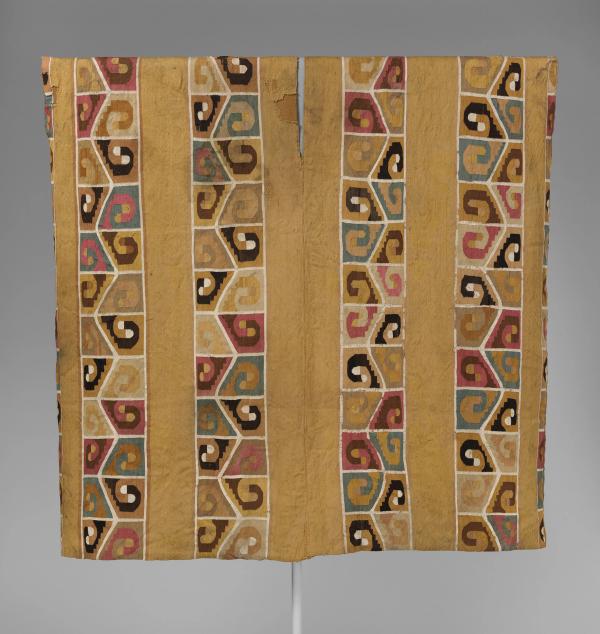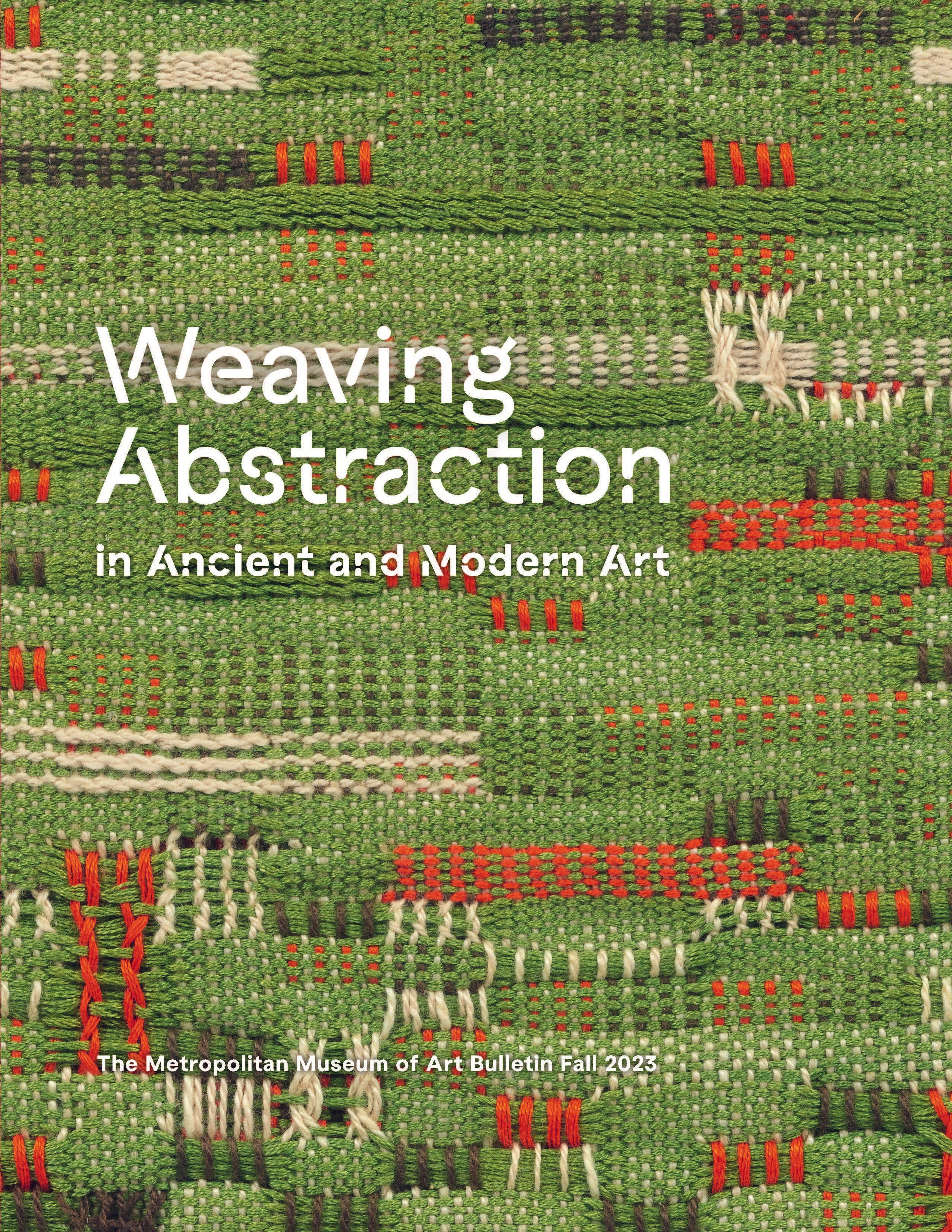Tapestry Tunic
In the Precolumbian Andes, sleeveless tunics reaching to the knees and worn over a loincloth were the primary male garment. Tapestry-woven tunics were the most prestigious, and the finest examples were made of up to eighteen miles of handspun camelid wool. As with those of their successors, the Incas, Wari tunics are standardized in size, format, color, and design, suggesting they were produced in state-sponsored workshops. On this fine tunic, a wavelike motif known as a stepped fret is arranged in registers in vertical bands, separated by a white border. The precise significance of this motif is not known, but the dazzling interplay of harmonious colors—pink, magenta, turquoise, crimson, and brown, against a light brown background, creates a strikingly bold visual statement.
Artwork Details
- Title: Tapestry Tunic
- Date: 7th–9th century
- Geography: Peru
- Culture: Wari
- Medium: Camelid wool
- Dimensions: H. 42 11/16 × W. 42 15/16 in. (108.5 × 109 cm)
- Classification: Textiles-Woven
- Credit Line: Gift of Claudia Quentin, in celebration of the Museum's 150th Anniversary, 2020
- Object Number: 2020.79
- Curatorial Department: The Michael C. Rockefeller Wing
Audio

1652. Tunic, Wari artist(s)
Joanne Pillsbury and Nilda Callañuapa Álvarez
JOANNE PILLSBURY: What we’re looking at here is a tunic, the primary male garment in the Andean region in the pre-Hispanic period, and it would have extended down to just above the knee, and it would have been worn over a loincloth.
JOSÉ MARÍA YAZPIK (NARRATOR): Joanne Pillsbury, Metropolitan Museum of Art.
JOANNE PILLSBURY: Any Andean person who would see somebody wearing a shirt such as this would immediately recognize that this was a person of incredibly high status because the weaving of these shirts is of the very, very highest quality.
JOSÉ MARÍA YAZPIK: This tunic was made in a Wari imperial workshop. The Wari were the first expansive imperial power in the Andean region, predecessors of the Inca. The materials reveal the reach and complexity of the Wari economic network.
JOANNE PILLSBURY: We see this tunic, for example, has cotton that would have been grown on the coast but also the camelid fibers produced in the highlands, and the camelid wool take the dye quite readily. So, you can get these incredibly vivid colors that you can see here on the tunics.
JOSÉ MARÍA YAZPIK: Nilda Callañaupa Alvarez, a weaver from Chinchero, Peru, explains the origins of the colors.
NILDA CALLAÑAUPA ALVAREZ: The natural dye resource doesn’t exist that much in the high altitude, there's almost nothing. Most of the commerce of the natural dyes came to the Andes, from the Amazon or rainforest and from the valleys, that's what we use for natural dyeing today.
JOSÉ MARÍA YAZPIK: Using backstrap looms and natural materials, ancient weavers developed a striking visual language.
JOANNE PILLSBURY: What we’re starting to see is this development of this powerful, geometric abstraction, that there can be figurative elements in these shirts, but often they are broken down and recombined in ways that are just so imaginative. We see this marvelous play of form, this interplay of color. It’s mind-bogglingly complex and wonderful.
More Artwork
Research Resources
The Met provides unparalleled resources for research and welcomes an international community of students and scholars. The Met's Open Access API is where creators and researchers can connect to the The Met collection. Open Access data and public domain images are available for unrestricted commercial and noncommercial use without permission or fee.
To request images under copyright and other restrictions, please use this Image Request form.
Feedback
We continue to research and examine historical and cultural context for objects in The Met collection. If you have comments or questions about this object record, please contact us using the form below. The Museum looks forward to receiving your comments.
